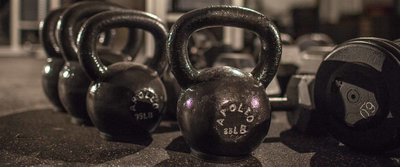Go to pretty much any gym in the United States today, and you can find some form of kettlebell class or training. Heck, I signed my wife up for a membership at the local YMCA, and there, sitting in the corner, was a haphazard collection of various sizes, weights, and colors of kettlebells.
Unfortunately—and this is going to sound snobby—very few people use them correctly. By correctly, I mean in a biomechanically sound way that won't simply prevent injury, but will also produce the desired outcome.
What's that outcome? Well, I believe that kettlebell workouts can put you closer to whichever goal you have, including as much strength and muscle growth as you're willing to work for. But let's start with the reason most people pick up a kettlebell: to burn fat.
How do you use kettlebell swings correctly to hack off slabs of unwanted fatback? Simple: You explode with each and every single repetition. This applies to those other goals as well, but the swing is an especially amazing tool for fat loss—once you know how access its power.
Moving Around the Bell
A kettlebell is an inanimate object. Left to its own devices, it just sits in the corner collecting dust and eventually rusts. But if you pick it up, it'll do what your body directs it to do, for better or worse. I know that sounds like a "no duh" statement, but let me explain.
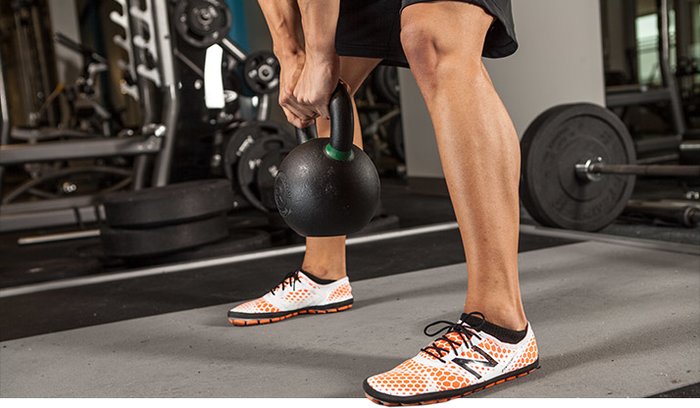
The kettlebell swing isn't really about the kettlebell. It's about you, and how you control your body and move around the kettlebell.
If you watch the way many people perform kettlebell swings, you may think the point is to move the weight around. But during a proper swing, perhaps more than in other weight-bearing exercises, the kettlebell simply reacts to the movement of your body.
That's right: The kettlebell swing isn't really about the kettlebell. It's about you, and how you control your body and move around the kettlebell. Since you, like most people, are probably accustomed to thinking in terms of moving weight, it may be difficult to grasp this at first. So let's take the load out of the equation entirely for the moment.
Start with the Finish
There are two positions you need to become familiar and comfortable with if you want to maximize the significant benefits of the swing. It may sound backward, but the first position is the finish position. Here's how you perform it:
The Finishing Position
- Stand with your feet placed outside your shoulders, either pointing straight ahead or turned slightly out, whichever is more comfortable to you.
- Clench your hands into loose fists. Hold your arms out in front of you, parallel to the ground, with elbows locked and hands touching.
- Pull your shoulders down into your waist, away from your ears. You should feel some tightness under your armpits. Those are your lats. You may never have felt them like that before, but this sensation is crucial to the swing, so remember it.
- Tighten your abs like you're bracing for a punch. Don't bend forward, though. Just try to lock your ribcage to your pelvis.
- Finally, squeeze your glutes as tightly as you can, like you're pinching a coin between your cheeks. Your body should form a straight line from your shoulders through your hips and knees down to your feet.
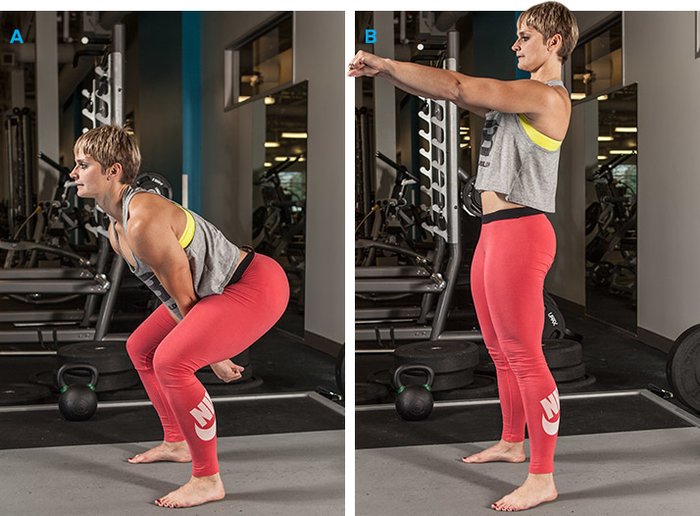
Kettlebell Swing
Practice holding this position for about 6-10 seconds, and then relax. Repeat for 3-6 sets, or until it feels comfortable.
This is a tense position, but make sure not to hold your breath. Your face shouldn't turn red, and you should be able to maintain this position while keeping your muscles relatively tight. Doing so protects your shoulders, neck, and lower back during the swing.
If you hit the finish correctly, even without weight, you'll feel not only your lats, but also your abs, glutes, and maybe even the muscles in your legs. This should give you an idea of why the kettlebell swing can be such an amazing fat-loss movement. Some of your most powerful muscles work together, work hard, and work fast.
Back to the Start
The backswing isn't just how you get the kettlebell from one point to another; it's how you load this explosive movement. The kettlebell passes under your body and between your legs, building tension throughout your powerful posterior chain.
The simplest way to understand this position is to set up for a vertical jump, so let's use that stance as a reference point.
The Starting Position
- Set your feet in the same position they were for the finish position.
- While your eyes look forward—head up and chest out—push your hips back. Fold into your hips, keeping your weight over the middle of your foot, slightly toward your heels. As you do this, your knees will bend to some degree. This is OK, but if you do it correctly, you'll feel your hamstrings, not your quads. Now hold that position.
- Think about performing a vertical jump. But instead of placing your arms outside your legs, move them between your legs. However—and this is crucial—keep the angle of your body steady. Only move your arms.
- Find your hamstrings, and by that, I mean feel them stretch. Remember, for every action there is an equal and opposite reaction. The more stretch you can get on your hips and hamstrings, the more powerful your swing is going to be.
- Find this position repeatedly, at least 3-6 times, and just like the finish position, hold it about 6-10 seconds each time. When you do it correctly, you'll feel it.
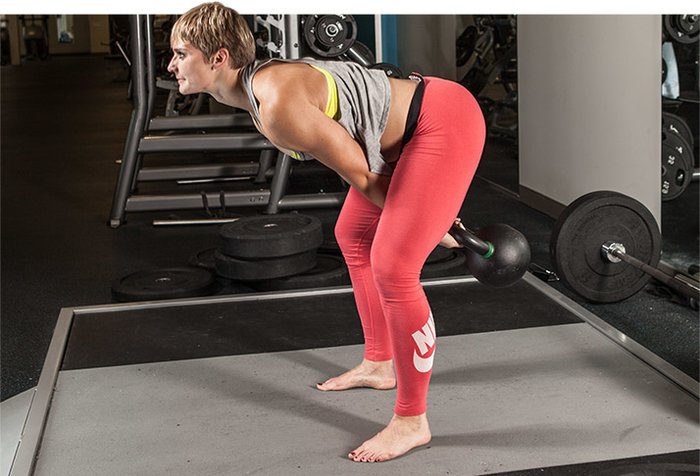
Find your hamstrings in the backswing. The more stretch you can get in your hips and hamstrings, the more powerful your swing is going to be.
You are in the correct position if your hands are together and your wrists are touching the inside of your thighs, above your knees, high in the crotch. When you hold a kettlebell—you're not yet, so just visualize this—it will form an extension of your arms and hands underneath and slightly behind your body.
Grooving The Swing
Performing a proper swing is as simple as putting together the two movements you just practiced. Don't pick up a bell yet, though. Keep pretending for now.
First, load up the backswing. Hold it for a split second. Then stand up, find your finish position, and hold it for a second. Backswing, stand-up, and finish. Backswing, stand-up, and finish. Do this repeatedly until you're comfortable with the positions and the transition between them.
Now add the crucial missing element: explosion. When you snap your hips from the stretch of the backswing, your hips—and hands, and eventually the kettlebell—should explode outward like a gunshot. This explosive hip snap generates large amounts of power. And the more power you can produce, the more work you can do. And the more work you can do, the more calories you'll burn. And the more calories you burn, the more fat you'll lose. Pretty simple formula really.
A key point to remember: Your arms and the kettlebell move as a result of the hips being loaded correctly. You are not assisting the hips with some weird looking quasi-shoulder front raise.
Geoff Neupert Double Kettlebell Swings Watch The Video - 00:46
Swing to Burn
If you found the positions correctly, you may have noticed that you were warm and maybe even slightly out of breath after just a few reps and holds. That's normal, because the swing motion—even unweighted—burns energy quickly.
Once you start exploding through with your hips, the energy burn becomes especially evident. The high power of an explosive swing makes use of your fast-twitch muscle fibers—Type II-b and some Type II-a fibers. These are the biggest muscle fibers you have, and they use a lot of energy, particularly the fibers in your legs (which the swing definitely works).
The harder you can contract your muscles in the finish position, the more you can load the backswing, and the faster you can stand up to get your kettlebell to the finish position, the more explosive you will be, the more you'll use those energy-hungry Type II-b muscle fibers, and the more calories you'll burn. Need it put even more simply? Explosive training licks the fat off your body, like fire through a paper mill.
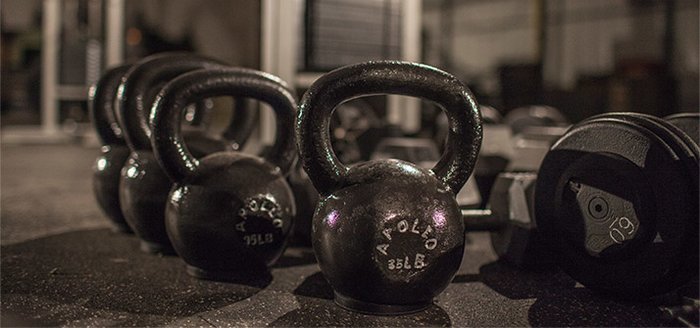
A good starting point is 35 pounds (or 1 pood) for most men, 18 pounds for most women.
Seriously: When was the last time you saw a fat sprinter? That's because sprinters move explosively. But, why not sprint instead of swing? Because, most people sit all day and don't have the strength to sprint without getting injured. Kettlebell swings will give you this type of strength without all that pounding on your joints.
Like sprints, you may find that kettlebell swings leave you glowing—and maybe wiping your forehead—long after your workout is done. This is a telltale sign of excess post-exercise oxygen consumption (EPOC), also known as the "afterburn effect." This is a 'magical' state where your body uses more energy and burns more fat than normal after your workout is done.
There is almost nothing better for burning calories, both during and after your workout, than a good hard session of properly performed swings.
The Next Step
Add a kettlebell to the movements outlined above. Pick one that feels substantial but not overwhelming. A good starting point is 35 pounds (or 1 pood) for most men, 18 pounds for most women. If you have the kettlebell movements down, you'll be surprised how hard you can work with weights that don't sound all that heavy.
That's the beauty of the swing. It's not rocket science, but if you do it right it's got a heckuva blast-off.

